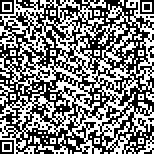朱冬燕,卢红建,黄志东,等.重复经颅磁刺激联合改良强制性运动疗法对脑卒中患者步行功能的影响[J].中华物理医学与康复杂志,2023,45(9):781-785
扫码阅读全文

|
| 重复经颅磁刺激联合改良强制性运动疗法对脑卒中患者步行功能的影响 |
|
| |
| DOI:10.3760/cma.j.issn.0254-1424.2023.09.003 |
| 中文关键词: 脑卒中 重复经颅磁刺激 改良强制性运动疗法 步行功能 |
| 英文关键词: Stroke Repetitive transcranial magnetic stimulation Movement therapy Constraint-induced movement therapy Walking |
| 基金项目:江苏省卫生健康委科研项目(M2021106);南通市卫生健康委科研项目(QNZ2023025) |
|
| 摘要点击次数: 3532 |
| 全文下载次数: 3951 |
| 中文摘要: |
| 目的 探讨重复经颅磁刺激(rTMS)联合改良强制性运动疗法(mCIMT)对脑卒中患者步行功能的影响。 方法 将纳入的75例脑卒中患者按随机数字表法分为rTMS组、假刺激组和联合治疗组,每组25例。3组患者均接受常规康复训练,主要包括平衡训练、转移训练、肌力训练、本体感觉训练等,治疗时间1次/日,每次40 min,每周5 d,共治疗4周。在此基础上,rTMS组增加rTMS治疗,假刺激组增加rTMS假刺激治疗,联合治疗组增加rTMS治疗20 min再间隔30 min后行mCIMT治疗。每日1次,每周5 d,共治疗4周。分别于治疗前和治疗4周后(治疗后),采用Fugl-Meyer运动量表下肢部分(FMA-LE)、Berg平衡量表(BBS)、10 m步行时间(10MWT)和改良Barthel指数(MBI)对3组患者的步行功能和日常生活活动能力进行评定。 结果 治疗后,3组患者的FMA-LE、BBS、10MWT和MBI等各项指标均较组内治疗前明显改善(P<0.05),且联合治疗组治疗后的FMA-LE评分[(27.88±4.04)分]、BBS评分[(47.80±5.16)分]、10MWT[(22.39±6.10)s]和MBI评分[(71.48±9.41)分]的改善程度均优于假刺激组和rTMS组,且组间差异有统计学意义(P<0.05)。 结论 rTMS联合mCIMT能更加有效改善脑卒中患者的步行功能,提高患者日常生活自理能力。 |
| 英文摘要: |
| Objective To seek any differential effect of combining repeated transcranial magnetic stimulation (rTMS) with a modified version of constraint-induced movement therapy (mCIMT) on the walking ability of stroke survivors. Methods Seventy-five stroke survivors were randomly divided into a sham rTMS group, an rTMS group and a combined group, each of 25. In addition to 40 minutes of routine rehabilitation daily, including balance training, transfer training, muscle strength training, and proprioceptive training five times a week for 4 weeks, the sham rTMS group and rTMS group received sham or genuine rTMS. The combined group received 20 minutes of rTMS followed by mCIMT training 30 minutes later. The treatment was performed once a day, 5 days a week for 4 weeks. Before and after the treatment, all groups were evaluated using the Fugl-Meyer lower extremity assessment, the Berg balance scale, a 10-metre walk test and the modified Barthel index. Results Significant improvement was observed in the average scores of all three groups in all of the assessments. The combined group′s averages were, however, significantly better than those of the other two groups. Conclusion Supplementing mCIMT with rTMS can better improve the walking and other abilities in the activities of daily living of stroke survivors. |
|
查看全文
查看/发表评论 下载PDF阅读器 |
| 关闭 |
|
|
|